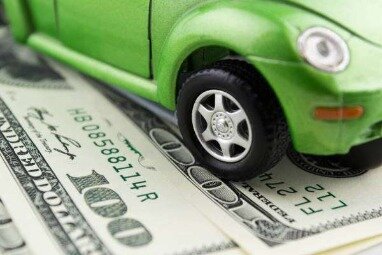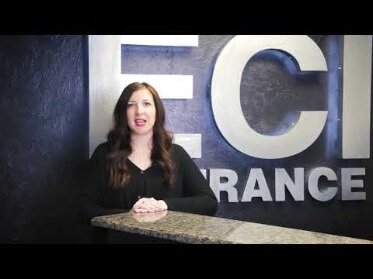Contents:


These costs are also the primary ingredients to various costing methods employed by businesses including job order costing, activity-based costing and process costing. That’s the point at which a company’s revenue and expenses are equal, meaning it isn’t earning a profit or losing money. Businesses with higher fixed costs generally have higher break-even points, meaning they have to make and sell more stuff in order to turn a profit . When you run your own business, you’ll have to cover both fixed and variable costs. For some businesses, overhead may make up 90% of monthly expenses, and variable 10%.

One element of economies of scale is specialization, also known as the experience curve. This occurs as workers become familiar with and knowledgeable about the production process and become better while providing insights to improve production structure. Fixed costs are business costs that occur regardless of output level. In terms of taking out loans, fixed interest rates are generally a better option than variable interest rates if you want to minimize risk. This is because variable rates can fluctuate monthly or quarterly and depend on economic conditions, which may change unexpectedly.
Fixed Costs Explained
By contrast, fixed rates never change for the duration of the loan. Making informed decisions about business expenses can help drive profitability. A business can also have discretionary expenses such as gifts, vacations, and entertainment costs. These are desirable, but you can choose whether to have them or not.
- A percentage royalty paid on product sold is an example of a variable cost.
- Read our editorial process to learn more about how we fact-check and keep our content accurate, reliable, and trustworthy.
- If a business grows, so will its expenses such as utility bills for electricity, gas, or water.
- Write a linear equation in two variable to represent this statement.
- In economics, the most commonly spoken about fixed costs are those that have to do with capital.
- Variable costs are expenses that change directly and proportionally to the changes in business activity level or volume.
Let’s see the top differences between fixed vs. variable cost. Remember that fixed cost do not change and therefore do not influence MC. Moreover, the company has to pay this cost throughout its operational period without any palpable change whatsoever. Bert now has to decide whether he wants to maximize profit or maximize time efficiency. This is because he earns more profit per unit, producing 1,000 units than 5,000 units. However, they make a higher overall profit producing at 5,000 units.
Examples of semi-variable costs for manufacturing
After doing some research you estimate your total monthly fixed expense would equal $1,100. This includes rent, office utilities, and other overhead expenses. This includes the cost of ice cream, cups, napkins, and labor. How much would you earn if you sold 5,000, 7,500, or 10,000 scoops in a month? Note that your fixed costs remain constant and your variable costs are directly related to the number of scoops you sell.
6 critical financial skills every business owner needs to succeed – Funding Circle
6 critical financial skills every business owner needs to succeed.
Posted: Fri, 07 Apr 2023 07:00:00 GMT [source]
The corporation will incur a variable cost of SAR 2,000 if it produces 1,000 units. Knowing the difference between expenses and revenue is the key to understanding the profitability of your business. As a small business owner, it is vital to track and understand how the various costs change with the changes in the volume and output levels. The breakdown of these expenses determines the price level of the services and assists in many other aspects of the overall business strategy.
Variable vs Fixed Costs Examples
Depreciation or financing payments on kitchen equipment, furniture, etc. You may be required to pay a minimum amount, increasing with the number of attendees. You can use a break-even analysis to figure out at what point you’ll become profitable. If you’re starting a new business, then the break-even point will help you determine the viability of the endeavor. If you already have your business up and running, the break-even point will help you find areas to improve your business and profitability.
The equation can help them calculate the number of units and the dollar volume that would be needed to make a profit and decide whether these numbers seem credible. For instance, a fixed cost isn’t sunk if a piece of machinery that a company purchases can be sold to someone else for the original purchase price. Fixed costs may include lease and rental payments, insurance, and interest payments.
Cash Weaner Pig Prices Average $23.11, Down $4.95 Last Week – Pork Magazine
Cash Weaner Pig Prices Average $23.11, Down $4.95 Last Week.
Posted: Fri, 14 Apr 2023 21:56:41 GMT [source]
We’ll highlight the differences between fixed costs and variable costs and even give you a few more financial formulas to take your business to the next level. Every business, no matter its size, incurs both fixed and variable costs. But cost structure differs greatly from industry to industry. If you’re a graphic designer who works from a home office, your fixed costs will be very different from those of a restaurant owner or a furniture manufacturer. A variable cost is a cost that directly increases as unit production increases and conversely decreases as unit production decreases. For example, an ice cream producer needs to buy more milk and chocolate if it produces more pints of ice cream.
Based on variability, the costs has been classified into three categories; they are fixed, variable and semi-variable. Fixed costs, as its name suggests, are fixed in total i.e. irrespective of the number of output produced. Semi-variable is the type of costs with the characteristics of both fixed and variable costs. Another example of variable costs would be if a business produces hats at $5 each.
How Do You Determine Variable vs. Fixed Costs for a Product?
They’re the costs you can plan for and are likely already factored into your regular budget. These costs can occur at any interval, but they’re typically monthly or yearly payments. Creating a budget is essential to saving for your life goals, and an important part of establishing one includes knowing the difference between your fixed and variable expenses. In manufacturing, the total cost of direct labor, raw materials, and facility upkeep will take the biggest bite out of your revenue.
The cost which remains constant at different levels of output produced by an enterprise is known as Fixed Cost. They are not affected by the momentary fluctuations in the activity levels of the organization. Keep in mind that fixed costs may not be consistent in the long run. Variable costs, however, do not remain the same and are usually directly linked to business activities. These are based on the volume of goods or services produced and the business’s performance. Since they are changing continuously and the amount you spend on them differs from month-to-month, variable expenses are harder to monitor and control.
- If no production or services are provided, then there should be no variable costs.
- Examples include oil & gas, automobiles, real estate, metals & mining.
- At the unit level, variable costs remain the same, while fixed cost per unit varies.
- Semi-variable expense is the aggregation of expenses incurred by a business, where some components are fixed costs and others are variable costs.
- By closely tracking all your business expenses and classifying them as fixed or variable costs, you’ll have a better handle on the health of your business.
This will keep you on top of your day-to-day finances and help you get a better idea of your overall financial outlook. If you offer special options or custom services, make sure your customers are aware of them. One strategy is to offer packages that bundle a popular low-margin item with a high-margin item you’d like to boost. Rush jobs and custom orders, while they can be a headache, may allow you to make up-charges that increase your profit margin and are a boon to cash-flow. If you’re looking to cut down on outgoing cash, start with your supplier. If you’ve been with the same company for a while, shop around again to see if there’s a better deal elsewhere.
For example, a business rents a building for a fixed cost of $50,000 per month for five years. The rent will stay the same every month, regardless of the business’s profit or losses. Variable costs can increase or decrease based on the output of the business. Variable costs change based on the amount of output produced.
Understanding different types of costs are essential for businesses to develop a strategy of providing quality products and making a profit. The two kinds of business costs are fixed costs and variable costs. Many cost accounting students are not able to bifurcate fixed and variable costs.
You’ll pay the fixed $100 no matter what, but the extra $20 is variable. Similarly, a business offers discounts, sales commissions, and hidden fees to agents and distributors. These expenses fluctuate all the time and are hard to predict. Marginal cost is the change in total cost when another unit is produced; average cost is the total cost divided by the number of goods produced.
It costs Bert $2,000 annually for rent and utilities to make the toothbrushes in his shed. If the cost structure is comprised mostly of variable costs , managers need to turn a profit on every sale, and so are less inclined to accept low-priced offers from customers. These businesses can easily cover their small amounts of fixed costs. This difference is a key part of understanding the financial characteristics of a business. This can lead to a heightened level of competition within an industry, since they all likely have the same cost structure, and must all cover their fixed costs. Once fixed costs have been paid for, all additional sales typically have quite high margins.
Will farmers get a new farm bill this year? – Will farmers get a new … – Farm Progress
Will farmers get a new farm bill this year? – Will farmers get a new ….
Posted: Thu, 06 Apr 2023 07:00:00 GMT [source]
For example, let’s say that Company ABC has a lease of $10,000 a month on its production facility and produces 1,000 mugs per month. As such, it may spread the fixed cost of the lease at $10 per mug. If it produces 10,000 mugs a month, the fixed cost of the lease goes down to the tune of $1 per mug. Some costs, such as loan payments and equipment depreciation are more likely to apply to restaurants than to other types of businesses. Above that amount, they cost you more, depending on how much revenue you earn. They aren’t affected by your production volume or sales volume.
Despite economies of scale occurring as output increases, eventually, the opposite will happen. Past a point, diseconomies of scale begin to increase production costs. When production grows too large, it can lead to a loss of efficiency because it becomes hard to manage everything. In another example, let’s say a business has a fixed cost of $7,500 to rent a machine it uses to produce shoes. If the business does not produce any shoes for the month, it still has to pay $7,500 for the cost of renting the machine. Similarly, if the business produces 10,000 mugs, the cost of renting the machine stays the same.
It’s in your best interest to spread out your how to calculate overtime pay costs by producing more units or serving more customers. You should also be aware of how many units you need to sell if you want to break even and become profitable. Whether you’re just starting out in the business world or your company is up and running, you know that minimizing costs is key to turning a profit and reaching your goals.
We’re excited to announce that a new and improved Mobile and Online Banking experience is on the way! The new platform will feature a wide range of new and upgraded tools and services designed to make it easier for you to manage your money—anytime, anywhere. Depreciation ChargeDepreciation is a systematic allocation method used to account for the costs of any physical or tangible asset throughout its useful life. Its value indicates how much of an asset’s worth has been utilized. Depreciation enables companies to generate revenue from their assets while only charging a fraction of the cost of the asset in use each year. When the average cost declines, the marginal cost is less than the average cost.
Fixed costs are constant production expenses that occur regardless of changes in output, while variable costs are production expenses that change with the level of output. Average fixed will trend downwards as fixed costs are constant, so as output increases, average fixed costs will decrease dramatically. A small cupcake bakery has a fixed monthly rent of $1,000 for its storefront, as well as a fixed salary expense of $3,000 for its full-time baker.
Bert is looking to open a business that sells dog toothbrushes, “That’s toothbrushes for dogs!” exclaims Bert with a grin. Bert hires a marketing and business expert to create a business plan with financial estimates. The business expert reports his findings below for Bert’s potential production options.

In economics, there is a fixed cost for a factory in the short run, and the fixed cost is immutable. But in the long run, there are only variable costs, because they control all factors of production. Variable costs are typically part of the cost of goods sold , although fixed costs can be included in COGS as well.